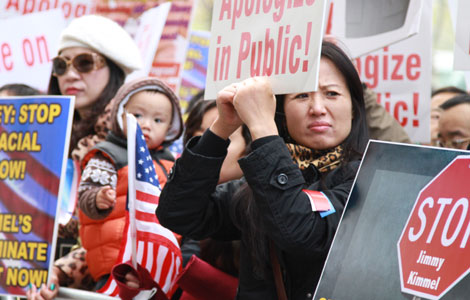A living museum's life support
Updated: 2013-11-10 07:55
By Xing Yi (China Daily)
|
||||||||
Demographics and architecture changed again as Beijing experienced a population flood from 1919 to '49 that generated a construction boom. Influential officials gravitated toward the Dongcheng district that contains Shijia. But Shijia's essential layout survived the redevelopment, which particularly focused on roads.

The greatest threat to Shijia's essential ancient integrity has come with the post-1949 modernization and population explosion.
Many ancient courtyards were gutted and replaced with multistory structures. Streets and hutong were reconfigured into new communities.
Shijia today contains 15 multistory buildings and 82 bungalows and courtyards.
The reconstructions came before the Protection of Beijing Traditional Hutong-Siheyuan Architecture was included in the General Plan of Beijing City (2004-2020). The policy's crux is the effective preservation of the original layout and style of hutong.
Courtyards are among the primary considerations for architectural conservation in the country's urban planning since they remain an important cultural vehicle.
They're still evolving and - with well-conceived planning - can continue to develop for generations.
Beijing's downtown hutong were mostly constructed in the 13th century, when the Yuan Dynasty (1271-1368) made it the imperial capital.
Around that period, Italian explorer Marco Polo wrote: "The city's layout is so well-structured that other cities' pale in comparison."
Shu Yi, former curator of the National Museum of Modern Chinese Literature and son of legendary Chinese author Lao She, advocates the perpetuation of Beijing's ancient edifices.
"The city would lose its charm as an ancient capital if there are only modern buildings," he says.
"So, it's fortunate we're preserving some precious heritage, such as hutong and siheyuan, however we develop."
Contact the writer at sundayed@chinadaily.com.cn
Xinhua and Erik Nilsson contributed to this story.

 At home with change
At home with change
 Typhoon kills at least 1,200 in Philippines, says Red Cross
Typhoon kills at least 1,200 in Philippines, says Red Cross
 Chinese Americans protest Kimmel joke in NYC
Chinese Americans protest Kimmel joke in NYC
 Brand China in leading role on Transformers set
Brand China in leading role on Transformers set
 Market moves to modern mall as Lhasa safeguards the past
Market moves to modern mall as Lhasa safeguards the past
 In small-town China, movies are big
In small-town China, movies are big
 A gathering of gourmets
A gathering of gourmets
 Super typhoon Haiyan slams into Philippines
Super typhoon Haiyan slams into Philippines
Most Viewed
Editor's Picks

|

|

|

|

|

|
Today's Top News
CPC session begins to set reform agenda
Economic growth to continue
US Oct jobless report paints dim picture
Obama's approval rating plunges to 41%
China's discipline agency targets holiday luxuries
Chinese land reform at crucial stage
Senior official at Cosco under investigation
Li appoints advisers to key govt think tank
US Weekly

|

|






